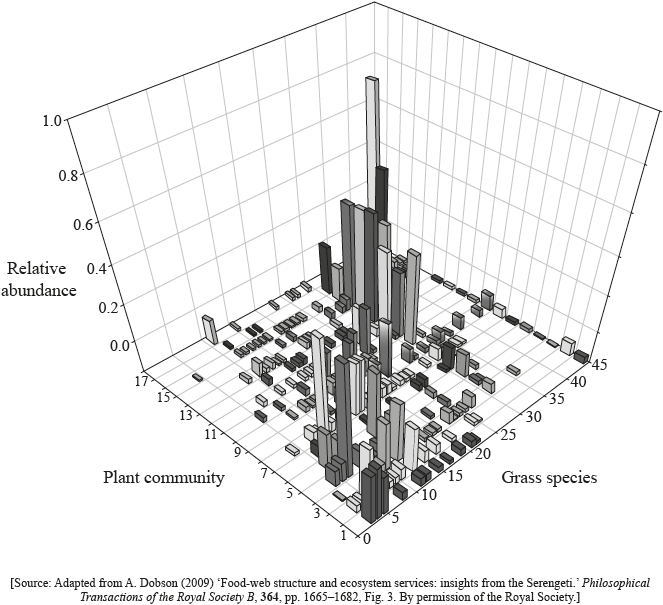| Date | November 2013 | Marks available | 1 | Reference code | 13N.3.SL.TZ0.19 |
| Level | Standard level | Paper | Paper 3 | Time zone | TZ0 |
| Command term | Suggest | Question number | 19 | Adapted from | N/A |
Question
The relative abundance of different grass species in the 17 plant communities of the Serengeti ecosystem in Tanzania is presented in the graph below. The communities are listed along a transect that runs from the dry south-eastern boundary of the park (community 1), north and west across the plains and woodlands to Lake Victoria (community 17).

Both communities 1 and 17 have a low overall abundance of grasses.
State the grass species that is most abundant in plant community 1.
Analyse the graph to find whether species 45 has a broad or narrow realized niche.
Suggest a reason for this in community 1.
Suggest a reason for this in community 17.
Evaluate the conclusion that there are trends in the distribution of plants along the transect of Serengeti grass communities.
Markscheme
4
broad (realized niche as present in many communities)
lack of water
shading from trees / lack of light /competition from trees and shrubs
communities have different species present;
grass species 1 to 15 more common in communities 1 to 7/dry south east boundary; (accept values within 3 of the upper and lower values given in the marking point)
grass species 32 to 45 more common in communities 13 to 17/woodlands; (accept values within 3 of the upper and lower values given in the marking point)
pattern linked to variation in rainfall/abiotic factors;
appears to have clusters of distinct plant species with little overlap;
species are found in certain areas only;
Examiners report
Almost all correctly identified species 4 as the most common in plant community 1.
Most also received the mark for indicating that species 45 had a broad realized niche as it is present in many communities.
While most gained the mark for (i), few candidates received the mark for (ii). Candidates seemed to overlook the idea of woodlands near Lake Victoria but instead seemed to think the plants were in the lake and have too much water.
While most gained the mark for (i), few candidates received the mark for (ii). Candidates seemed to overlook the idea of woodlands near Lake Victoria but instead seemed to think the plants were in the lake and have too much water.
This question was very discriminating as in general candidates had a difficult time explaining the trends. Some did note that the pattern seemed to be linked to abiotic factors such as water availability.

